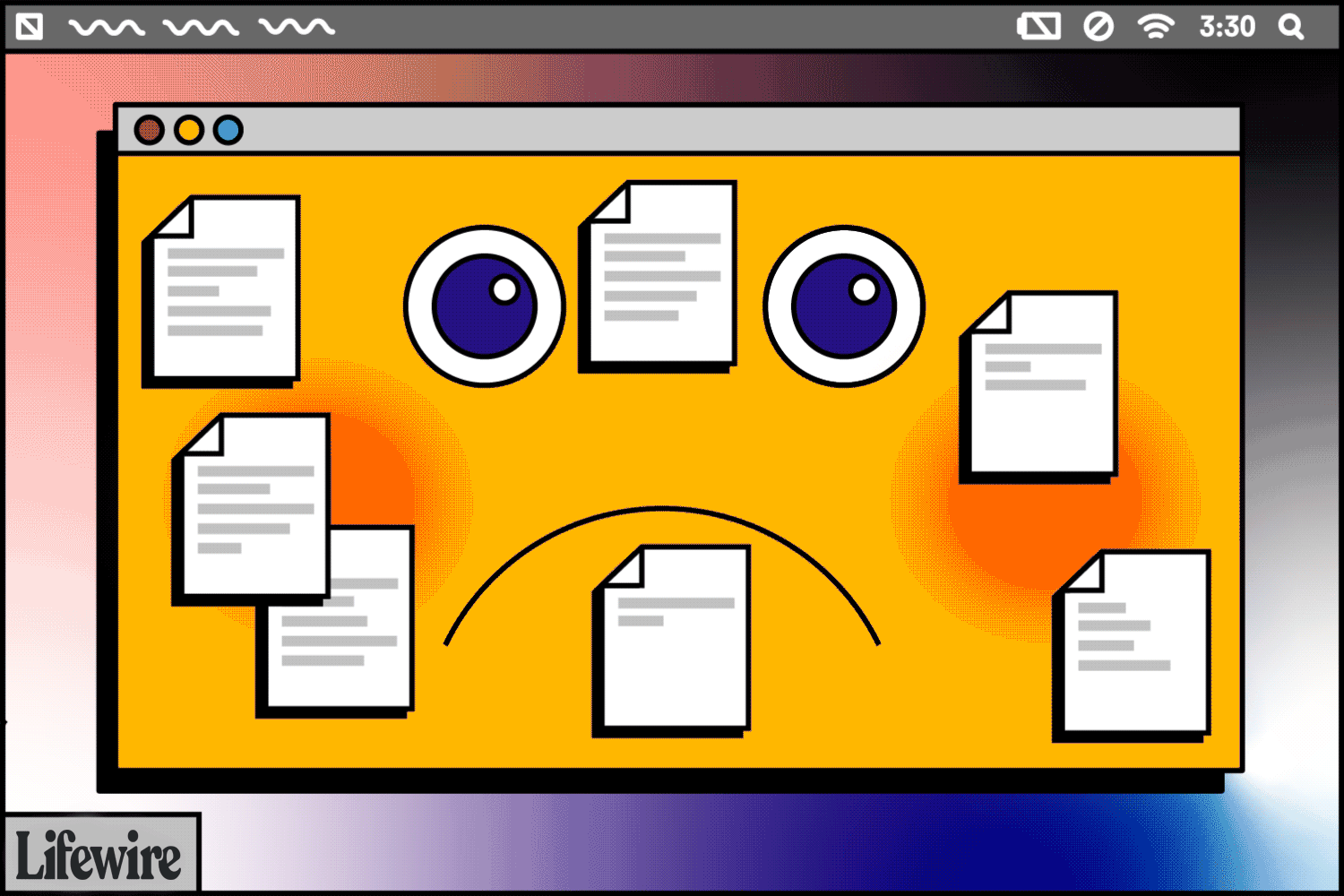What to Know
- Clearing cache can fix some browsing problems, free up space, and remove saved versions of visited pages for privacy reasons.
- Most browsers let you clear cache quickly via Ctrl+Shift+Del (Windows) or Command+Shift+Delete (Mac).
- Otherwise, try your browser’s Settings, Privacy, or Advanced options.
What Exactly Is Cache?
Your browser’s cache, pronounced cash, is a collection of web pages stored on your hard drive or in your phone/tablet storage. The cache includes the text, images, and most other media contained on web pages that you’ve visited.
Having a local copy of a web page makes for quick loading on your next visit because your computer or mobile device doesn’t have to download it from the internet again. Over time, however, the cache may take up a big chunk of your computer’s storage.
Why Do You Have to Clear Cache?
You don’t have to clear the cache as a regular part of computer or smartphone maintenance. However, there are some good reasons to clear cache:
- Clearing your cache forces your browser to retrieve the newest copy available from the website, something that should happen automatically but sometimes does not.
- You’re experiencing issues such as 404 errors or 502 errors (among others) that may indicate your browser’s cache is corrupted.
- Malware is another reason to delete the browser cache. It can be dropped in the cache without you knowing or alongside program installations, so clearing the entire cache can delete malicious files. (It also helps to have antivirus software.)
- Another reason to delete browser cache data is to free up space on your hard drive. Over time, the cache can grow to a huge size; clearing it can recover some of that previously used space.
Regardless of why you want to do it, clearing your browser’s cache is easy to do in all the popular browsers in use today.
As mentioned above, the quickest way to pull up the «cache clearing» or «browsing data» section in your browser is via Ctrl+Shift+Del (Windows) or Command+Shift+Delete (Mac) but see one of the sections below for the exact steps involved in clearing your specific browser’s cache.
This guide covers Chrome, Internet Explorer, Firefox, Safari, Opera, Edge, and Vivaldi, plus their respective mobile browser apps.
Chrome: Clear Browsing Data
Assuming you use a keyboard, the quickest way to the Clear browsing data window in Google Chrome is by using the keyboard shortcut Ctrl+Shift+Del (Windows) or Command+Shift+Delete (Mac).
If you aren’t into keyboard shortcuts, here’s how to clear the Chrome browser cache on your computer:
- Select the three-dotted menu button in the upper-right corner of Chrome and select Settings in the drop-down menu.
- Choose Advanced at the bottom of the page.
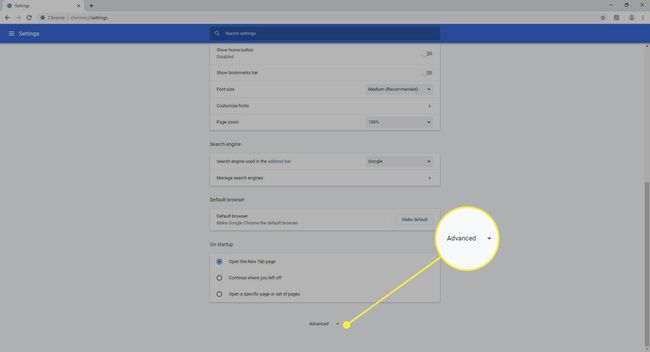
- Select Clear browsing data.
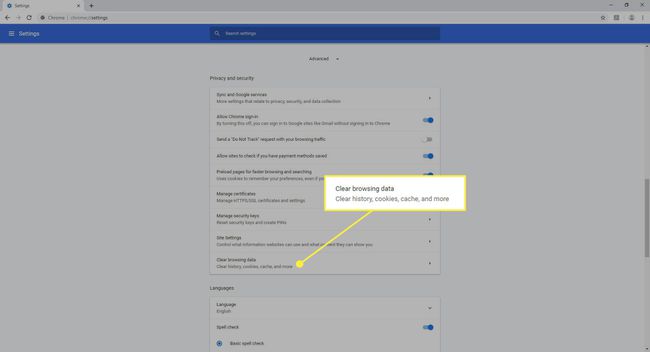
- Check the box next to Cached images and files.Also choose All time from the Time range option at the top to make sure you get everything.
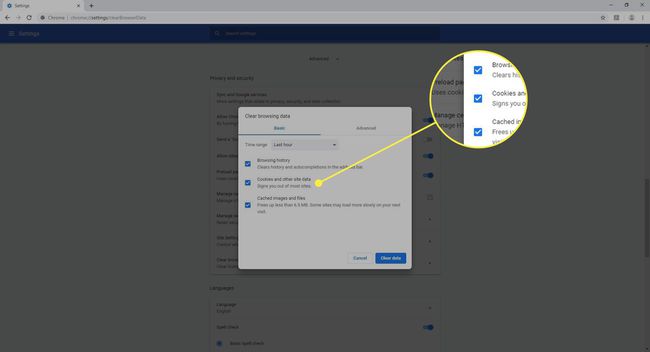
- Choose Clear data.
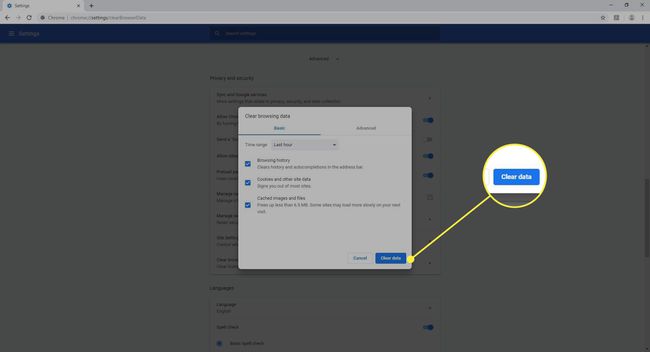
You can find more details about clearing browsing data in Chrome on Google’s support website.
Clear Cache in the Chrome Mobile App
In Chrome’s mobile app:
- On Android, open the Chrome app and tap the three-dotted menu icon at the top of the screen. iOS users can find this button at the bottom.
- Tap Settings in the menu.
- Tap Privacy.
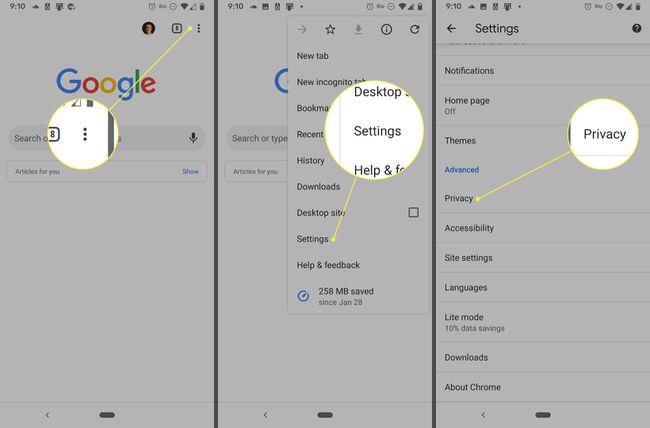
- Choose Clear browsing data.
- Tap Cached images and files to place a check mark next to it.
- Select Clear data on Android or Clear Browsing Data on iOS, and then confirm with Clear (Android) or Clear Browsing Data (iOS) in the pop-up window.
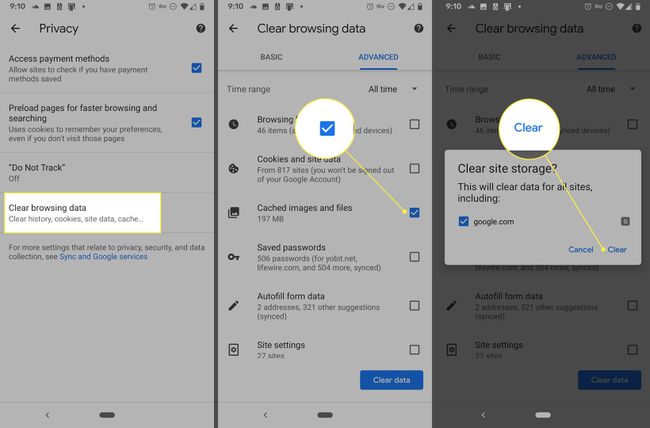
Internet Explorer: Delete Browsing History
In Microsoft Internet Explorer, the browser that comes installed on most Windows computers, you clear the cache in the Delete Browsing History screen.
As with other popular browsers, the fastest way to the Delete Browsing History screen is via the Ctrl+Shift+Del keyboard shortcut.
Another option is:
- Open the Tools icon, which sits at the top-right corner of the browser and resembles a gear.
- Select Delete browsing history under Safety.
- Place a check next to Temporary Internet files and website files.
- Select Delete.
Internet Explorer often refers to the browser cache as temporary internet files, but they’re one and the same.
Firefox: Clear Recent History
In Mozilla’s Firefox browser, you clear the cache from the Clear Recent History or Clear Data area.
The Ctrl+Shift+Del (Windows) or Command+Shift+Delete (Mac) keyboard shortcut is the fastest way to open the Clear Recent History screen, which looks like this:
Don’t forget to choose Everything from the Time range to clear options, assuming that’s your intent.
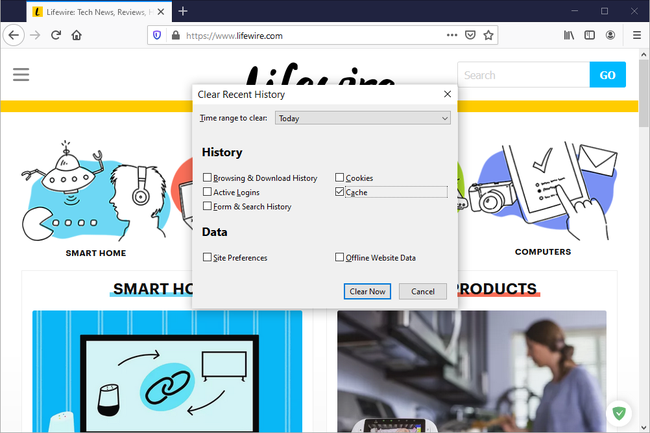
To get to the Clear Data screen through the menus, do this:
- In Firefox’s menu button (the three-lined hamburger icon), select Options.
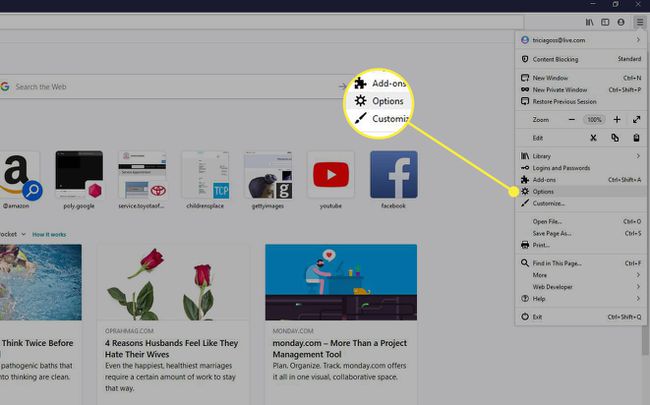
- Choose Privacy & Security from the left.
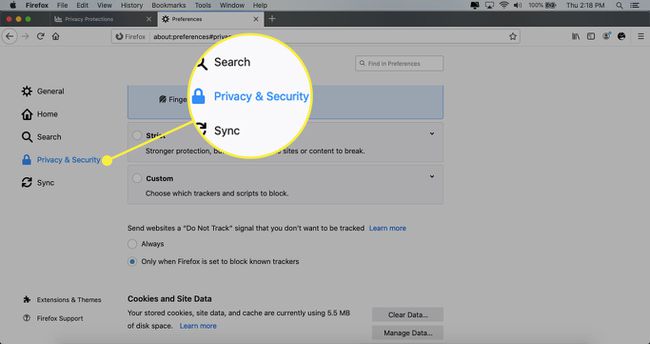
- Select Clear Data in the Cookies and Site Data area.If you scroll down a bit and choose Clear History, you’ll get to the same screen that the shortcut above takes you to.
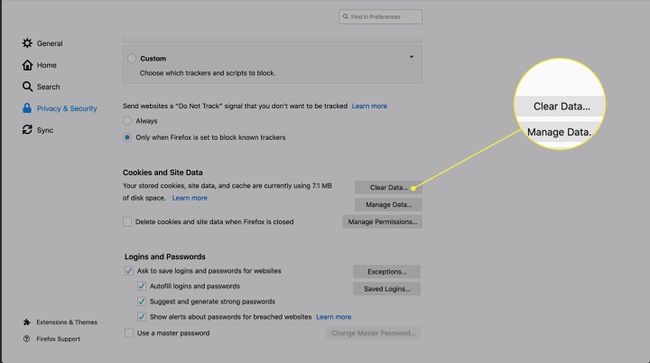
- In the Clear Data screen that opens, select Cached Web Content.
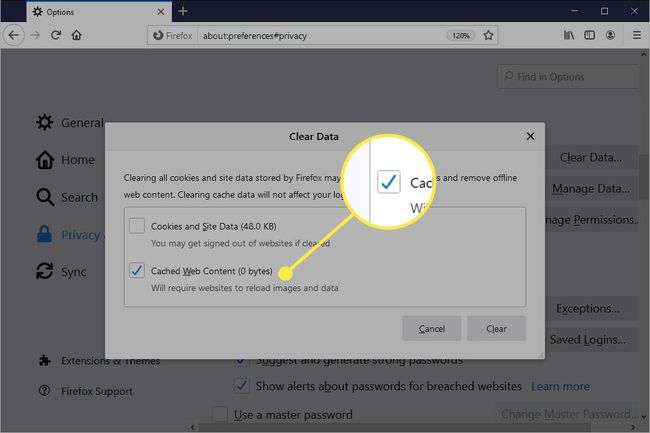
- Choose Clear.
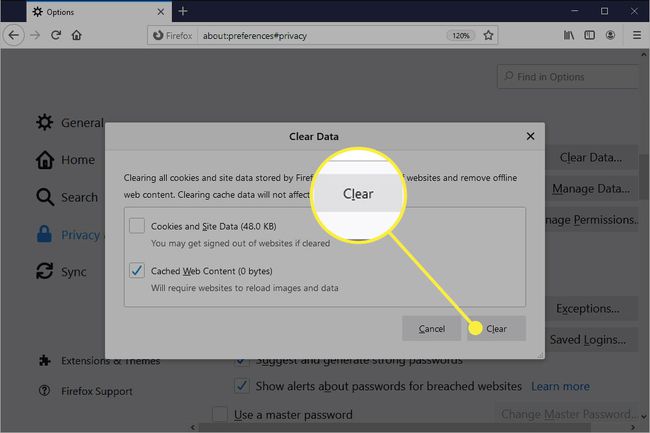
Clear Cache in the Firefox Mobile App
To delete the cache in the Firefox mobile app:
- Tap the three-line menu icon at the top (Android) or bottom (iOS) of the app and choose Settings in the menu.
- Select Clear private data on Android, or Data Management on iOS.
- Enable the Cache option.
- Choose CLEAR DATA on Android. If you’re on an iOS device, select Clear Private Data and then confirm with OK.
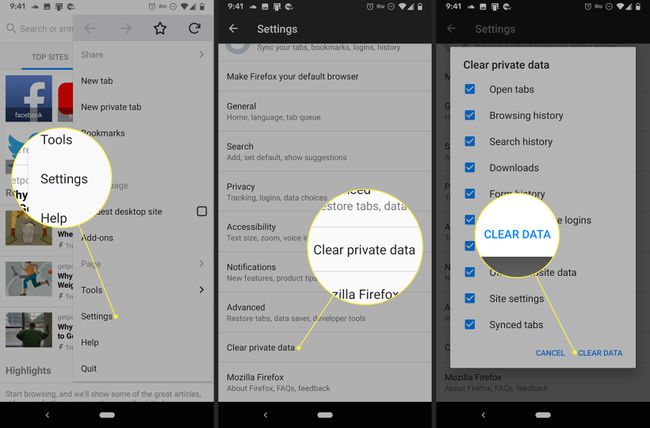
Safari: Empty Caches
In Apple’s Safari browser on a Mac, clearing the cache is done via the Develop menu. Just select Develop in the Safari menu bar and then choose Empty Caches.
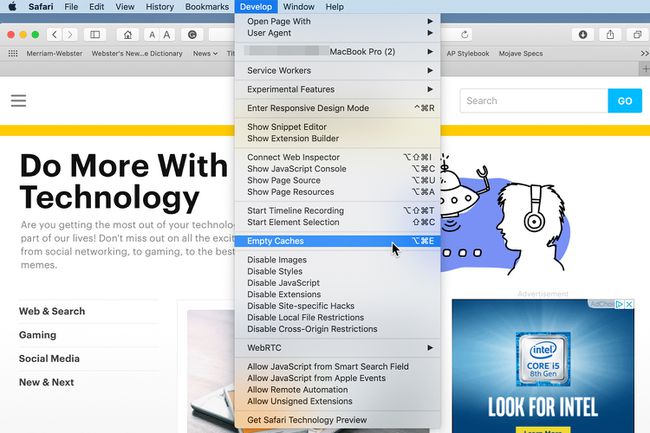
You can also clear the cache in Safari on a Mac using the Option+Command+E keyboard shortcut.
If you don’t see Develop on your Safari menu bar, enable it via Safari > Preferences > Advanced, followed by selecting Show Develop menu in menu bar.
Clear Cache in the Safari Mobile App
Clearing the browser cache from mobile Safari on your iPhone or iPad is accomplished in a different app.
- Open the Settings app and tap Safari.
- Scroll down and tap Clear History and Website Data.
- Tap Clear History and Data to confirm.
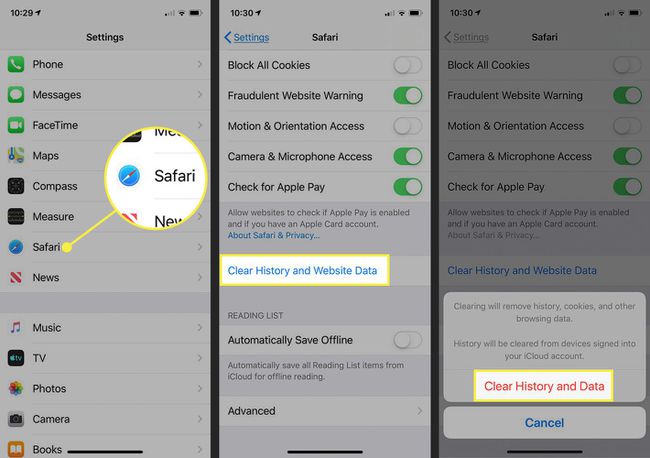
Opera: Clear Browsing Data
In Opera, clearing the cache is done via the Clear browsing data section that’s part of Settings.
The fastest way to bring up the Clear browsing data window is via the Ctrl+Shift+Del (Windows) or Command+Shift+Delete (Mac) keyboard shortcut.
Otherwise:
- Select the Settings icon, which looks like three sliders in the upper-right corner of the browser.
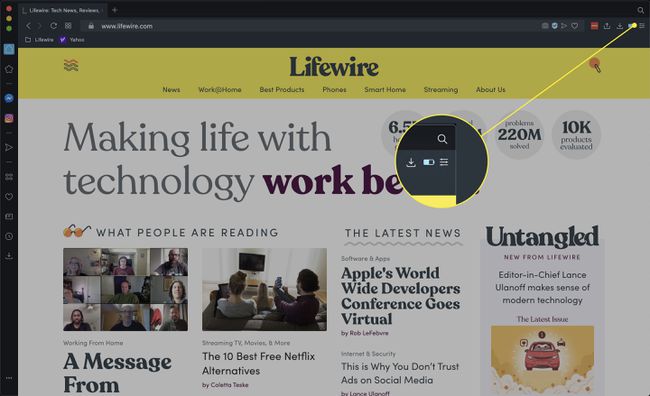
- Scroll down and choose Clear browsing data.

- Opera automatically selects all items you can delete, including Cached Images and Files. Click Clear Data to remove the information.
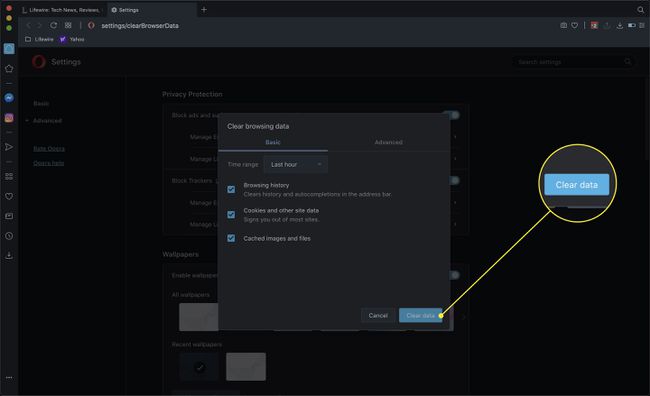
You can find detailed instructions on how to clear the cache on Opera’s website.
Be sure to choose All time at the top to erase everything.
Clear Cache in the Opera Touch Mobile Browser
You can clear the cache from the Opera Touch mobile app, too.
- Use the Opera button at the bottom of the app to select Settings.
- Choose Clear browsing data on Android, or Clear Browser Data on iOS.
- Tap Cached images and files to place a check next to it.
- Choose CLEAR DATA on Android, or Clear on iOS.
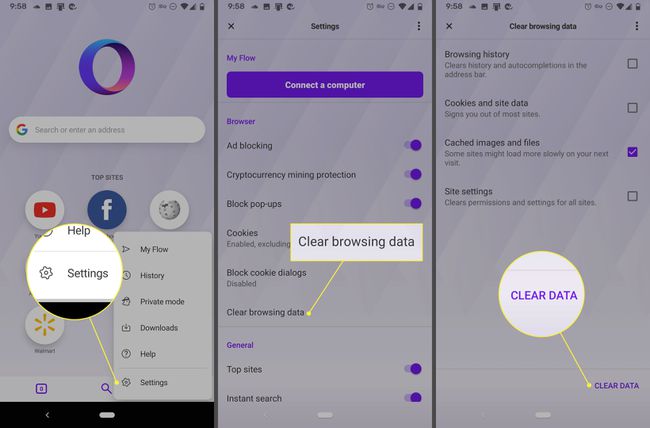
If you’re using the Opera app, tap Settings from the Opera menu, go to Clear browsing data, choose Advanced at the bottom followed by Cached images and files, and then tap CLEAR DATA.
Edge: Clear Browsing Data
Clearing the cache in Microsoft Edge is done via the Clear browsing data menu.
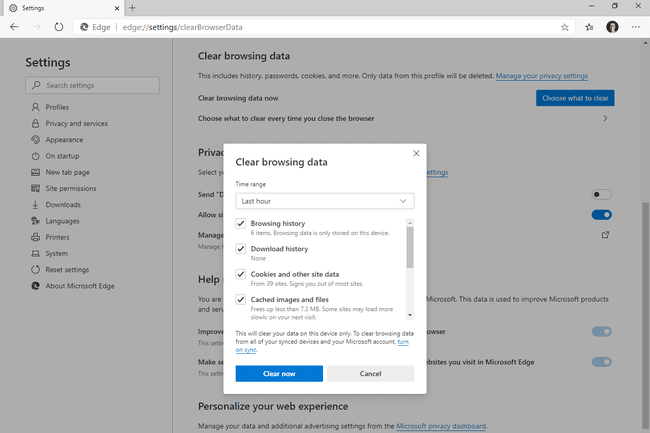
The fastest way to the Clear browsing data menu is via the Ctrl+Shift+Del keyboard shortcut.
Here’s another option:
- Open Microsoft Edge and select the three-dotted menu button at the top of the screen.
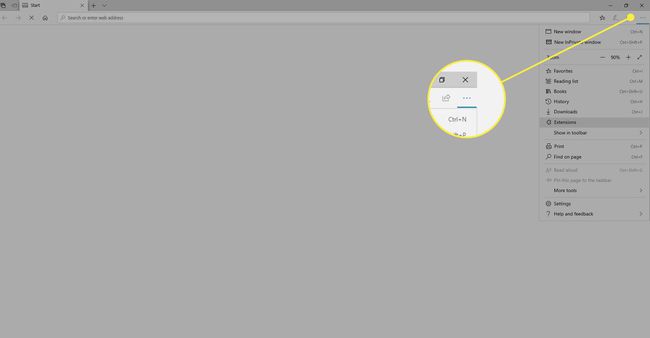
- Select Settings.
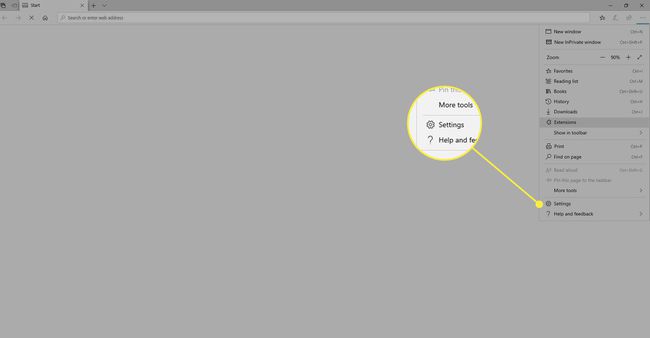
- Go to Privacy and services.If you don’t see these options, open the menu from the button at the top left of this screen.
- Select Choose What to Clear.
- Select the items you want to delete and then choose Clear now.
See how to clear the cache in Microsoft Edge for more help.
Clear Cache in the Edge Mobile Browser
To delete cache files from the Edge mobile app:
- Open the Edge app and tap the three-dotted menu button at the bottom.
- Choose Settings.
- Select Privacy and Security.
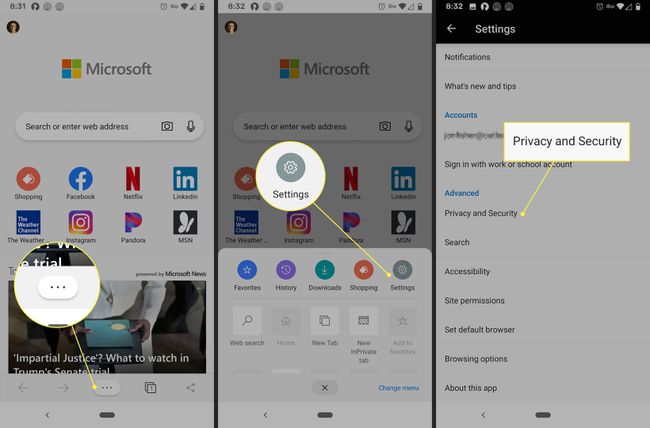
- Tap Clear browsing data.
- Make sure Cached images and files is selected on Android, or Cache on iOS. This screen is also how you can delete other items like saved passwords and cookies.
- On Android, tap Clear and then confirm with CLEAR. For iOS, choose Clear browsing data and then Clear.
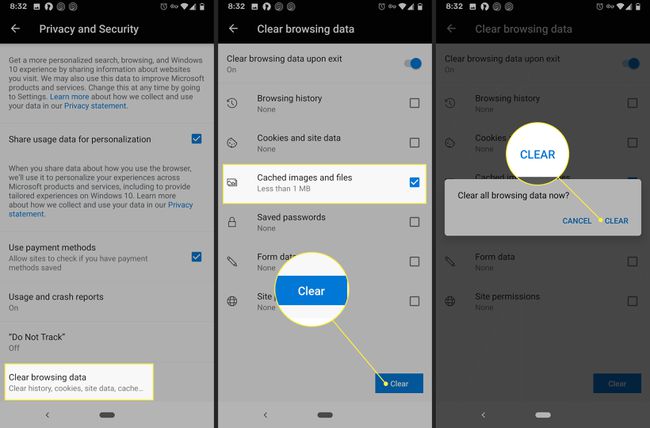
Vivaldi: Delete Browsing Data
Clear the cache in Vivaldi via the Delete Browsing Data area.
- From the menu bar (select the V logo at the top left if you don’t see it), go to Tools > Delete Browsing Data.
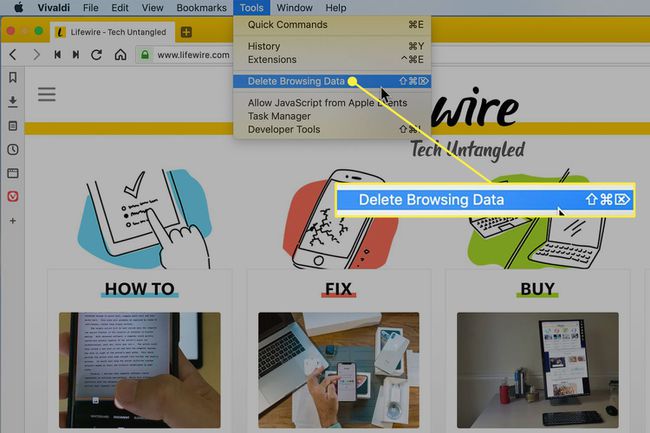
- Select Cache as well as any other categories you want to clear.You can also use this screen change the Delete Data for time to something else like All Time to clear the whole cache.
- Choose Delete.
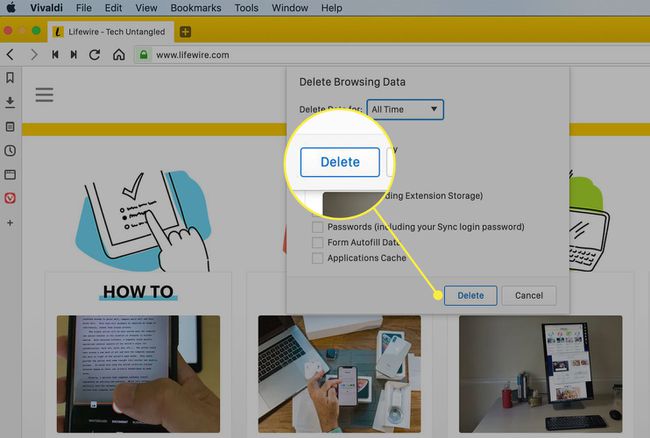
As with most browsers, the Ctrl+Shift+Del (Windows) or Command+Shift+Delete (Mac) keyboard shortcut brings up this menu, too.
Clear Cache in the Vivaldi Mobile Browser
The Vivaldi app for Android lets you clear the cache as well:
- Tap the V icon at the top right of the app and then tap Settings.
- Scroll down and select Privacy.
- Tap Clear browsing data.
- Make sure Cached images and files is selected, and optionally adjust the Time range setting to clear more or less of the cache.
- Tap Clear data to erase the cache.

More About Clearing Caches in Web Browsers
Most browsers have at least basic cache management settings where, at a minimum, you can choose how much space you’d like the browser to use for its cache.
Some browsers let you choose to automatically clear the cache and other data that might contain private information every time you close the browser window.
In most browsers, you can overwrite a web page’s stored cache without deleting all the cache collected by the browser. In essence, this erases and replenishes the cache for that specific page only. In most browsers and operating systems, you can bypass the cache by holding down the Shift or Ctrl key as you refresh.
